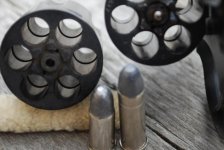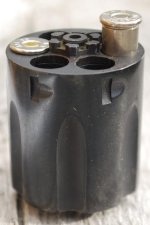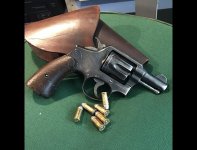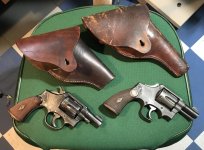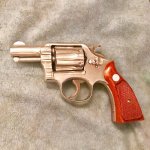leicanthrope
Member
I recently picked up a Smith and Wesson "Victory Model" revolver (serial V441047) that's been nickel plated and converted to snub nose. Short of splurging for a factory letter, what should I be looking at to determine if I've got one of the many repatriated .38-200 Lend-Lease pistols that was bored out for .38 Special and converted, or an American contract pistol? The usual caliber markings were either removed or were faint enough that they're no longer visible after the nickel plating. Are there any other markings (or the absence thereof) that would point one direction or the other?

(Also, the grips are not original. It came with obvious anachronistic aftermarket grips.)

(Also, the grips are not original. It came with obvious anachronistic aftermarket grips.)


